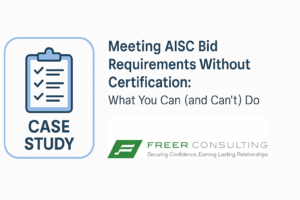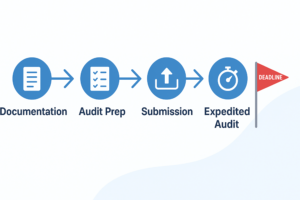Environmental Compliance for the Tug and Barge Industry
Environmental sustainability is becoming an increasing factor in the success of many different industries. Customers are more likely to make environmental goals, objectives, and targets for reductions in emissions, energy use, and resource consumption a basic requirement for continuing to do business with them. The tug and barge industry, recognizing its impact on the environment, has been working towards minimizing its environmental footprint.
To support this goal, the American Waterways Operators (AWO) has developed a set of voluntary best practices that provide guidance to industry members in various aspects of environmental stewardship. In this article, we will explore AWO’s best practices in waste management and showcase specific measures implemented by one of our projects that have resulted in cost savings while reducing hazardous waste disposal.
AWO Best Practices in Waste Management
The AWO’s waste management best practices aim to minimize waste generation and promote proper disposal techniques. Let’s take a closer look at some key principles outlined by AWO:
- Assess, categorize, and monitor waste streams. AWO encourages companies to assess and categorize their waste streams to understand their waste generation patterns. This allows for benchmarking performance and setting waste reduction goals. By closely monitoring waste outputs, companies can identify areas for improvement and track their progress over time. Also, identifying alternative materials to hazardous substances can help promote sustainability by minimizing the purchase of hazardous materials in the first place.
- Develop waste reduction initiatives. To minimize waste generation, AWO recommends adopting targeted waste reduction goals and implementing company-wide reuse, recycling, and waste reduction programs. Our client has successfully implemented several waste reduction initiatives, including:
- Completely using up the contents of aerosol cans before recycling or disposal, thereby reducing the amount of universal or hazardous waste.
- Draining and recycling fuel filters, saving on hazardous waste disposal costs.
- Dispose of universal wastes properly. AWO emphasizes the importance of properly discarding universal wastes, such as lightbulbs, batteries, aerosols, and other hazardous materials. Through active collaboration with approved vendors, our project ensured the correct disposal of universal wastes through recycling programs. This not only helps protect the environment but also reduces disposal expenses.
- Maximize consumables and waste reduction equipment. Companies are encouraged to implement practices that maximize the use of consumables before disposal. The project initiative included consideration for alternatives prior to purchasing materials that can become hazardous waste, and fully utilizing consumables like aerosol and paint cans before disposing of them, reducing waste initiation and generation. Additionally, installation of compactors and evaporators can help reduce waste.
More Waste Segregation and Recycling Measures
Building upon AWO’s best practices, our project included implementation of the following waste segregation and recycling measures, which have been verified to save money:
- Efficient bilge water and used oil management. We worked with vendors to segregate bilge water and used oil during pumping operations. Manifesting and disposing of bilge water as hazardous waste and recycling used oil demonstrated more effective management of waste streams while potentially benefiting from rebates offered by certain states for recycling used oil.
- Proper disposal of oily rags and waste paint. Disposing of dry oily rags and allowing waste paint to dry, instead of treating them as hazardous waste, saved costs.
- Recycling universal wastes. Light bulbs, batteries, aerosol cans, and other universal wastes are recycled through appropriate vendors, ensuring their proper disposal, and reducing the environmental impact.
- On-board waste segregation and disposal. Implementing effective waste segregation practices on board and shoreside, allowing recyclables to be disposed of in designated bins whenever available, ensures proper waste management and promotes recycling initiatives.
Conclusion
The tug and barge industry is committed to enhancing its environmental performance and sustainability through responsible waste management practices. By integrating the principles outlined in the AWO’s Voluntary Environmental Stewardship Best Practices report with specific measures implemented by our client, we have witnessed tangible results in terms of cost savings and reduced hazardous waste disposal. These efforts not only contribute to environmental stewardship but also showcase the industry’s dedication to going beyond regulatory requirements. As the tugboat industry navigates the evolving landscape of environmental expectations, collaboration and continued improvement in waste management practices will play a crucial role in preserving and protecting our natural environment for future generations.
Contact Freer Consulting to learn how we can help get your organization into environmental compliance.







